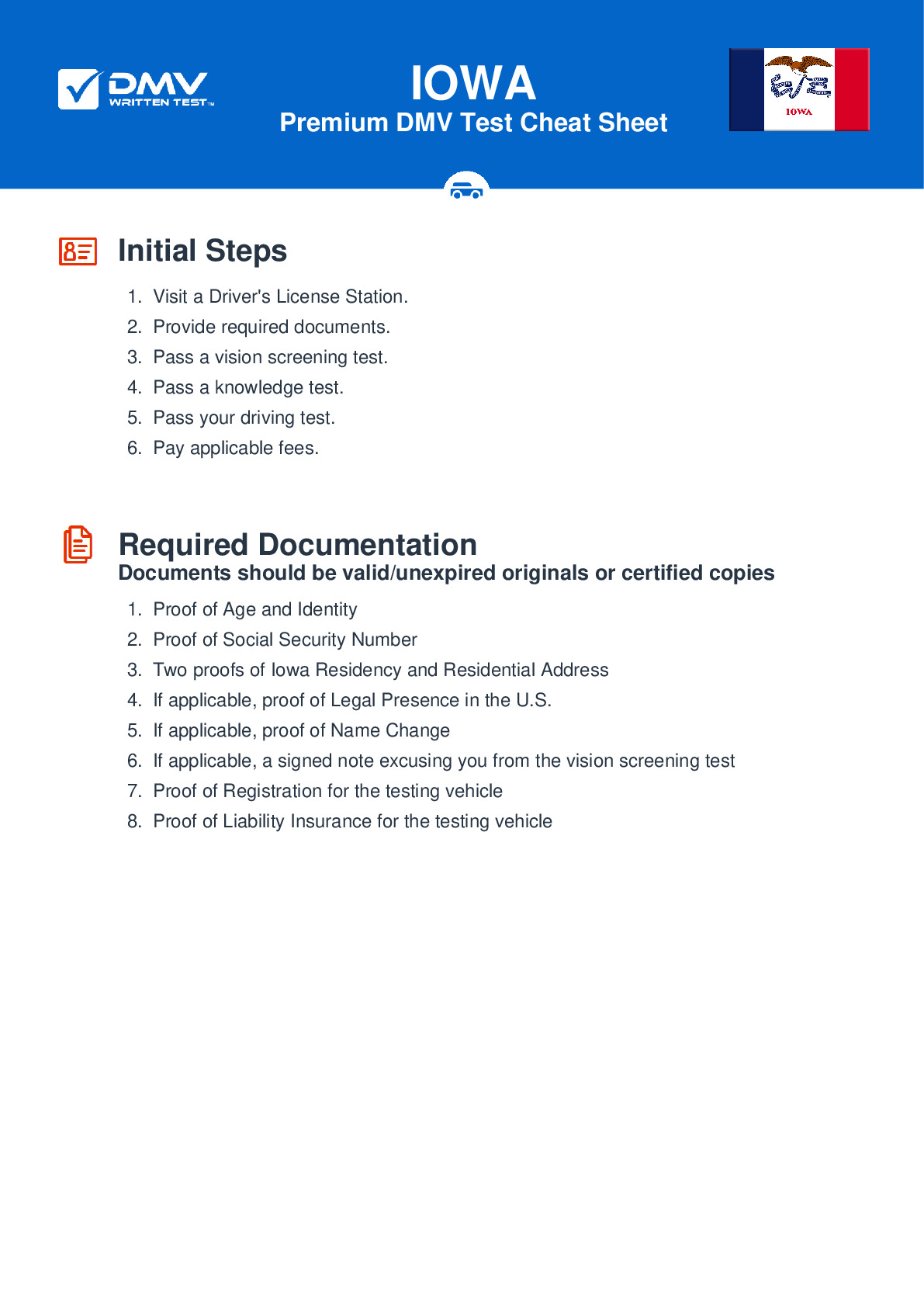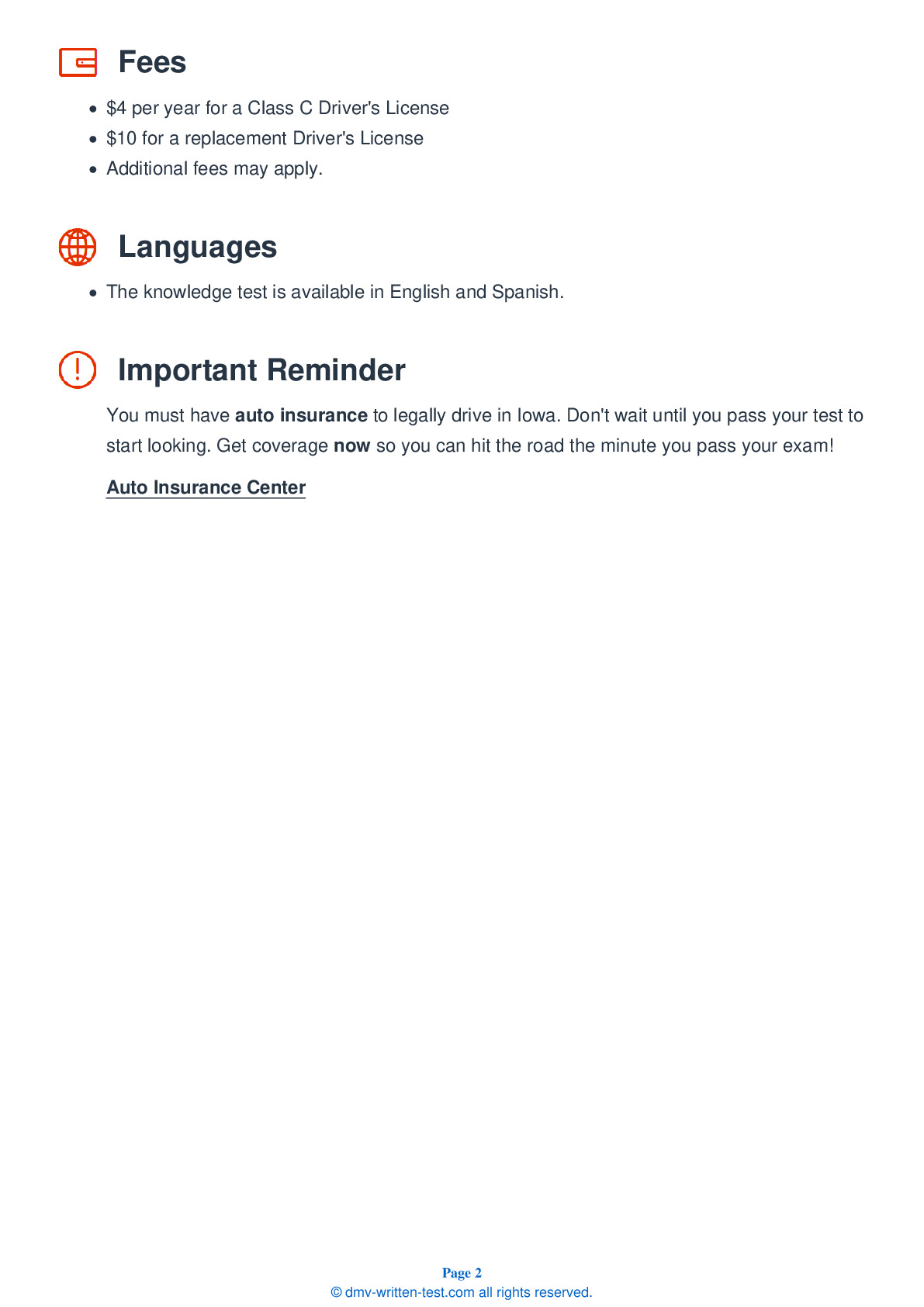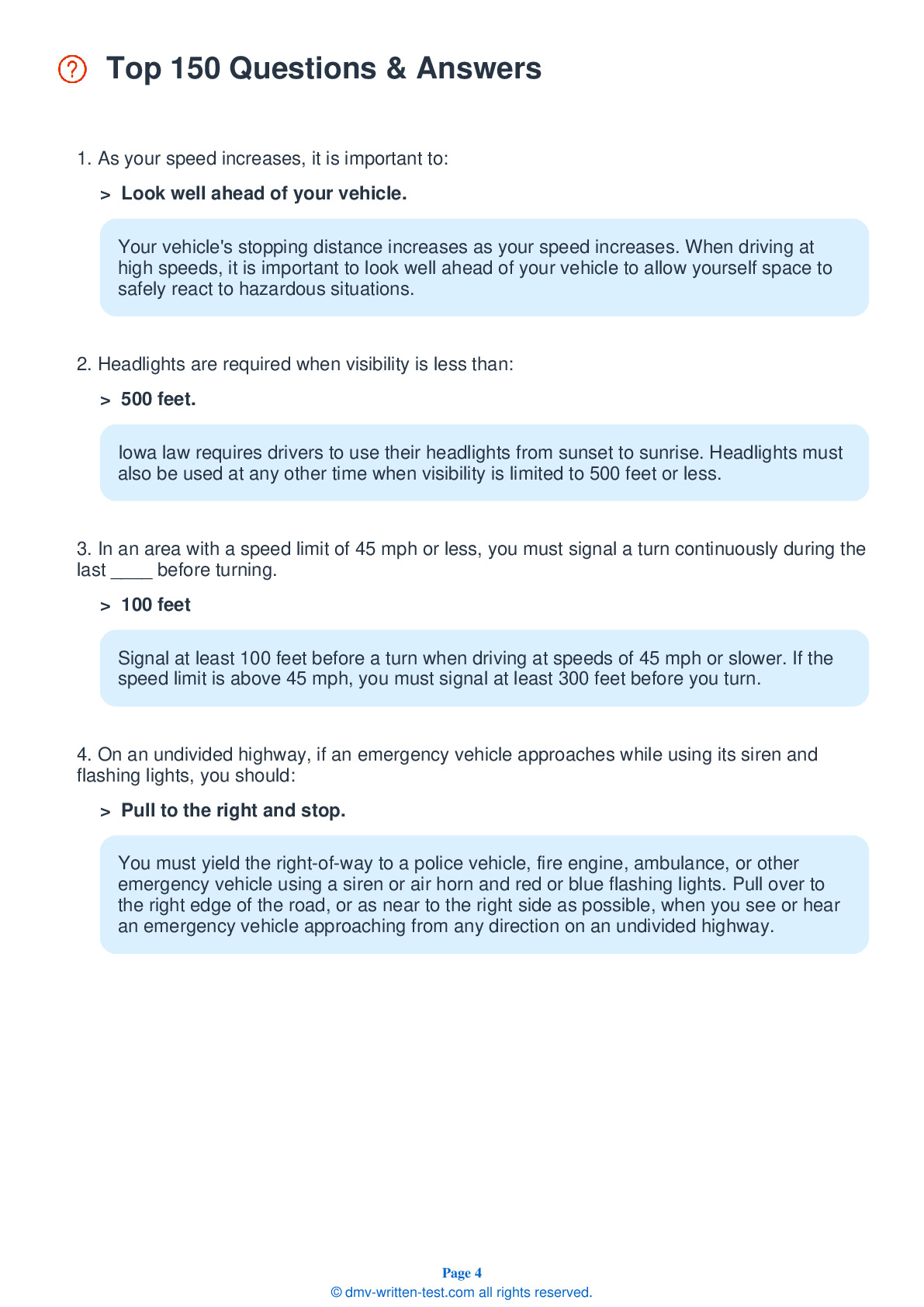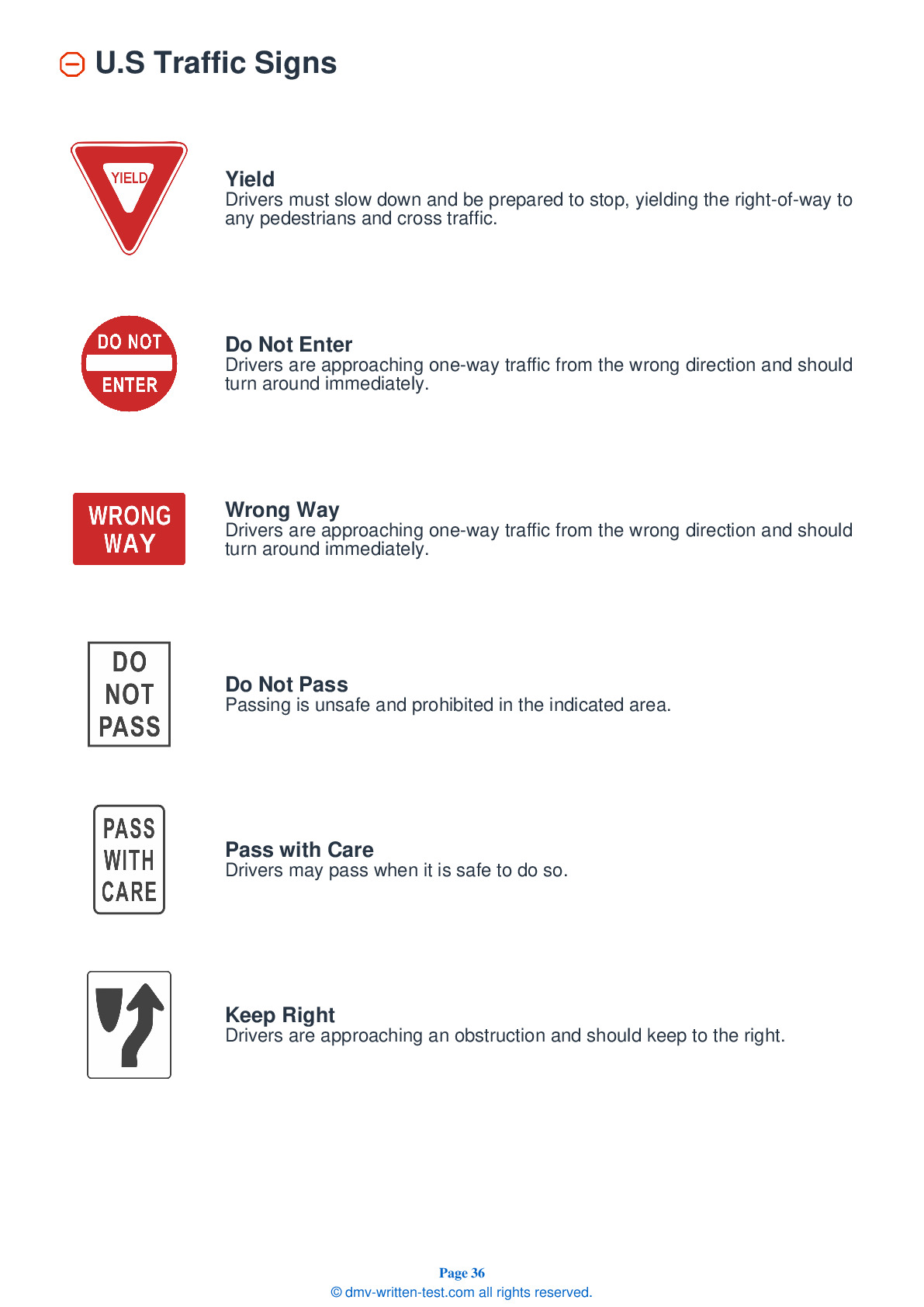2026 Iowa Permit Test 15
The following questions are from real DMV written tests. These are some of the actual permit questions you will face in Iowa. Each permit practice test question has three answer choices. Select one answer for each question and select "grade this section." You can find this button at the bottom of the drivers license quiz. For a complete list of questions and answers for Iowa please visit https://cheat-sheets.dmv-written-test.com/en/iowa/car.
Number of Tests
Number of Question
Passing Score
1. If two drivers arrive at the same time to a four-way intersection controlled by stop signs:
Explanation
Yield the right-of-way to the driver on your right at a four-way intersection if you both arrive to the intersection at the same time. You may then proceed when it is safe to do so.
2. Interstate driving requires drivers to:
Explanation
Safe use of the interstate demands drivers be constantly alert and capable of driving at high speeds.
3. Which of the following statements about driving speed is true?
Explanation
As driving speeds increase, the chance of a fatality in the case of a collision increases. If you are going faster than 80 miles per hour, you have almost no chance of living through a crash. The speed you drive affects your stopping distance, so you should increase your following distance as you increase your speed.
4. Your blind spot is the area of the road:
Explanation
Blind spots are areas that a driver cannot see without moving their head. They can be located to the sides of and behind a vehicle.
5. What may help drivers conserve gasoline?
Explanation
Every time you have to stop quickly, it takes time and fuel to accelerate and get your vehicle back up to the speed of traffic. Drivers who look far ahead of their vehicles can slow down gradually or change lanes to avoid unnecessary braking, leading to better gas mileage.
6. When driving on the highway, consistently looking far ahead of your vehicle:
Explanation
To avoid the need for last-minute braking or turning, consistently watch the road far ahead of your vehicle. By looking ahead and being ready to stop or change lanes if needed, you can drive more safely, save fuel, and help keep traffic moving at a steady pace.
7. While driving on a two-lane road without bicycle lanes, you encounter a bicyclist traveling in the same direction. What is the safest way to pass the bicyclist?
Explanation
You should pass a bicyclist the same way you would pass any other vehicle, but not so fast or close to them that you throw debris in their face or blow them around with the draft of air from your vehicle. Allow at least 3 feet of space between your side mirror and the bicyclist, or at least 5 feet on higher speed roads or when there is a group of bicyclists. Honking unnecessarily may startle riders and make them more likely to crash.
8. Collisions are more likely to happen when:
Explanation




